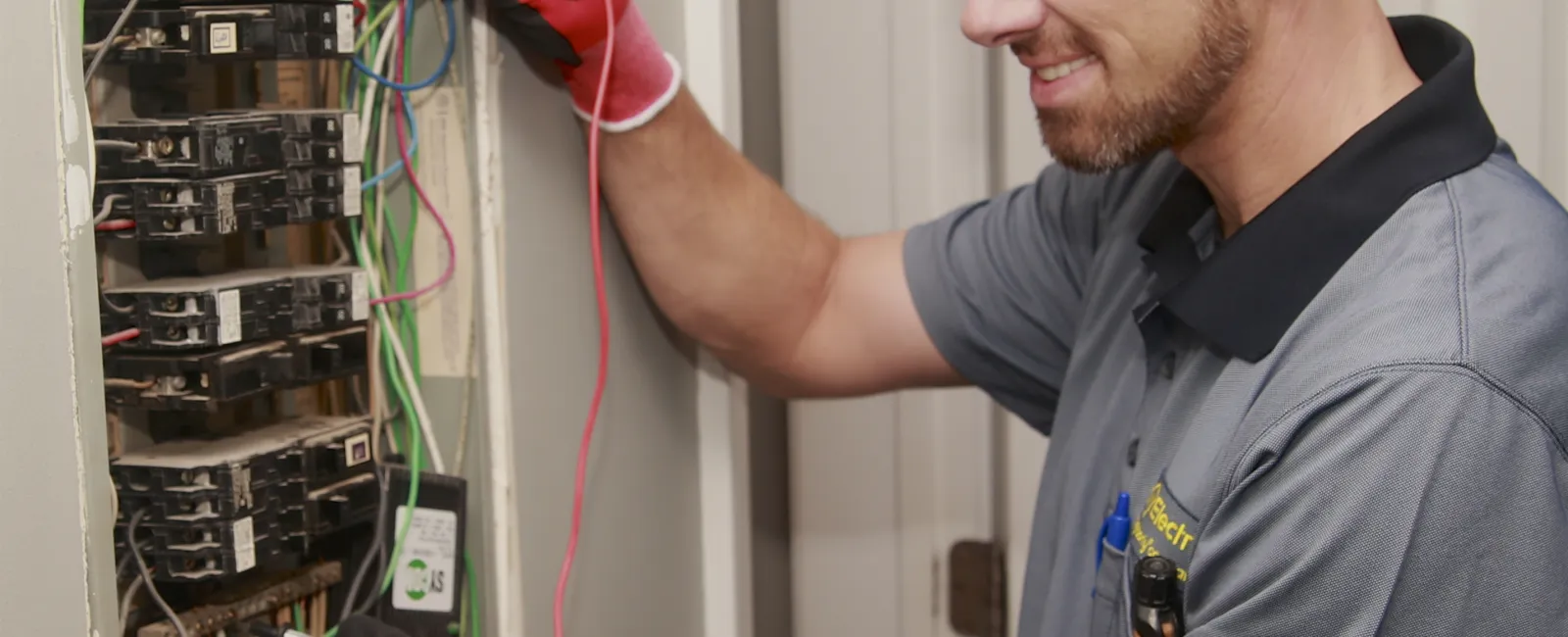Let's say you're doing a simple DIY electrical project around your house. In this case, you need to know the different types of wire you'll encounter because the additional electrical knowledge will enable you to work safely and efficiently.
Here's a quick guide to common wiring types to bring you up to speed.
Identifying Wiring
Residential wiring was relatively simple, with electricity being critical. However, modern homes can be wired for cable, telephone, internet, and more. Identifying the type of wiring in your walls can make life much easier.
Here are some common wire types and how to identify them.
1. Electrical Wiring
Electrical wiring provides power to your home, including light switches, power outlets, and generators. Houses built earlier than the 1970s were designed with 60-amp service, but modern homes require a higher load and are equipped with 200-amp service. Still, it runs at 120 volts for most outlets.
But how do you identify basic electrical wiring?
Color is the best way to identify electrical wiring. First, black implies the "hot" wire. To explain, this wire carries electricity from the power source to the outlet like a switch. Second, white is the "neutral" wire. This wire carries idle electricity back to the breaker panel.
Lastly, green (or sometimes plain copper) is the "ground" wire. This electrical wire allows excess electricity to get back to the power source safely and effectively instead of the power passing through you.
And remember: If you're unsure whether a wire is live, use a multimeter to test voltage. Outlets and light fixtures usually use 14 2 Romex wire (14 gauge) that only requires 15 amps of power. Large appliances like the washer and dryer, refrigerator, and stove will still be within that range but have a much higher wattage and voltage of 240.
2. Telephone Cable
Although house phones are primarily a thing of the past, thanks to VoIP, many homes are still outfitted with telephone cables. The phone lines can still be hidden within the walls, even with no phone outlets. So how do you identify telephone cables?
Most telephone cables consist of one or more pairs of twisted wires. The standard is the 4-strand (2 pairs), whereby the red and green cables make the first pair while yellow and black wires make the other pair.
Additionally, phone lines measure 48 volts DC and can be identified with your multimeter. If you don't have home phone service (or use VoIP), consider replacing your phone lines with something more updated, like a networking cable.
3. Antenna Cable
Residential cable uses a coaxial cable to deliver audio/video and internet to your home. These coaxial cables (also known as antenna cables) are great at carrying high-speed data to provide high-definition content. And the wires are relatively easy to identify compared to other wires, with a maximum voltage of 600 volts.
Also, coaxial cables typically have markings (letters and numbers ) printed on them, mainly close to the connector at the end of the cable. For instance, coaxial cables labeled RG-6, RG-11 and RG-59 are usually used for applications such as video signals for televisions. In other cases, you can search the markings online to determine a cable's usage.
Please note: If you use your voltage meter, an antenna cable should not have any actual voltage. It uses low electricity to send data, and it should barely register (if at all) on your multimeter. If you read the voltage from your coaxial cable, contact your cable company to have it serviced.
4. AV Cable
Some modern homes go beyond smart wiring and cable to provide a complete audio/visual experience. An AV cable connects speakers, monitors, and other A/V equipment that may be built into the house.
To make it easy to identify, the main types of AV cables are:
- Composite AV cable
- VGA/DVI AV cable
- HDMI AV cable
- S-Video AV cable
In other words, AV cables transmit video and audio signals from one device to another. Finally, an AV cable has a low voltage of up to 2V and is vulnerable to interference as they're often thin wires.
Need help with electrical wiring repair?
Electricity repair is complex, and you may not feel comfortable identifying and engaging with the wires. That's perfectly fine - at Mr. Electric, we have experienced electricians and cable installers who can do it for you.
Contact us at Mr. Electric of Atlanta today to book an appointment for one of our experts to come over and check your house wiring. We'll give you an honest assessment and quote so you can sleep easy knowing you're in the right hands.




